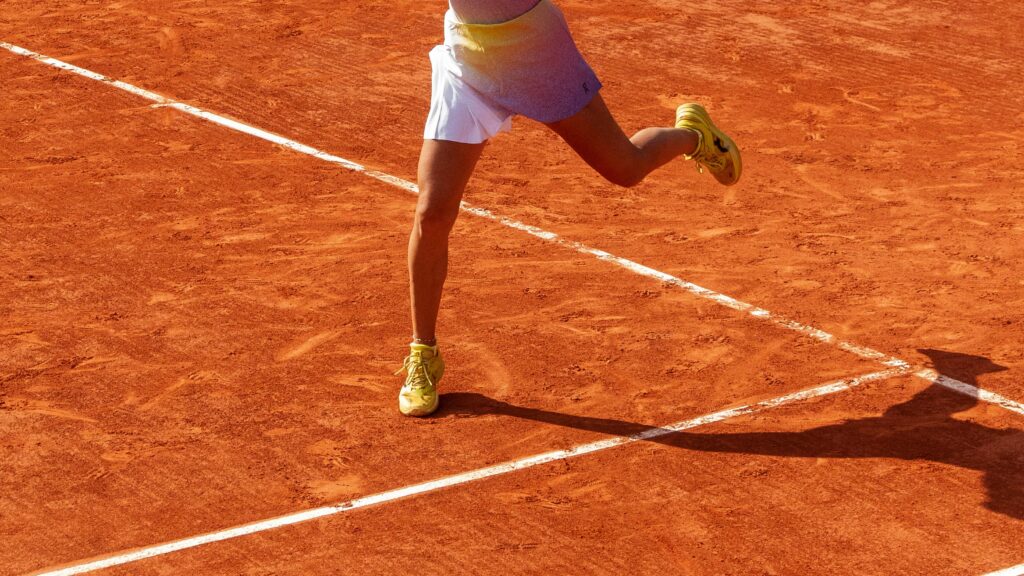
FORCE REDUTCTION : Deceleration
In tennis training, we often hype up power and speed in social media and the explosive movements: the powerful serve, the fast sprint to a drop shot, the flashy change of direction. We spend hours in the gym building strength and power to move faster. But what about stopping? changing direction? landing from a jump?
The if you have been in elite tennis performance and injury resilience isn’t just acceleration; it’s deceleration.
Deceleration is the body’s ability to efficiently absorb force, control momentum, and rapidly come to a stop or change direction. In tennis, where players change direction every 1-2 seconds and constantly lunge, slide, and jump, mastering deceleration isn’t just an advantage—it’s high priority without it you can expect decrease performance and visit to you Doctors & Physio’s office
Why is Deceleration So Crucial in Tennis?
Think about the last time you watched a professional match. A player sprints diagonally to retrieve a wide ball, plants their outside leg, and pushes off to recover back to the center of the court. That split-second where they plant their foot is a high level of deceleration. Their muscles, tendons, and ligaments are absorbing forces that can be several times their body weight.
- Direction Changes: Every cut, pivot, and split-step requires deceleration in one direction to accelerate in another.
- Landing: The serve and overhead smash involve a jump and a landing. Proper deceleration technique ensures the force is absorbed by the muscles, not the joints.
- Lunging: A deep lunge to reach a low volley is a controlled deceleration of the body’s forward momentum.
- Stopping: Running full speed to get a lob and stopping abruptly under the ball requires immense eccentric strength.
If you’re only training to produce force (acceleration) and not to absorb it (deceleration), you’re only training half the movement increase the risk of major injuries’ especially to knee and ankle .
TOP FOUR Benefits of Deceleration Training
- Reduced Risk of Injury: Most non-contact injuries in tennis (like ACL tears, ankle sprains, hamstring strains, and patellar tendinitis) happen during deceleration. By training your body to handle these forces, you strengthen the muscles and connective tissues, making them more resilient.
- Improved Change of Direction Speed: You can’t change direction effectively if you can’t brake effectively. Better deceleration allows for tighter turns, faster recovery, and more explosive first steps out of a change of direction.
- Enhanced On-Court Stability and Balance: Deceleration training hones your proprioception (your body’s awareness in space) and core stability. This leads to better balance when hitting off-balance shots and more controlled movements overall.
- Increased Power Output: The stretch-shortening cycle (SSC) is the foundation of power. Think of a spring: you must first load it (decelerate) to release it (accelerate). Training deceleration improves your ability to “load the spring,” leading to a more powerful serve and groundstrokes.
The Negative Impact of NOT Training Deceleration
Ignoring deceleration is like building a sports car with a powerful engine but weak brakes. It’s a recipe for disaster.
- Compensatory Movements: Your body will find a way to stop, often by using poor mechanics—like letting the knees cave in or leaning too far forward. These place abnormal stress on joints.
- Overuse Injuries: The repetitive stress of decelerating with poor form leads to chronic issues like shin splints, IT band syndrome, and plantar fasciitis.
- Increased Acute Injury Risk: As mentioned, you are far more susceptible to severe ligament sprains and muscle tears.
- Performance Plateau: You’ll never reach your top speed or agility potential because your “brakes” can’t handle the forces generated by your “engine.” F1
Contraindications: When to Be Cautious
While vital, deceleration training is intense. It should be introduced carefully, especially for:
- Post-Injury Athletes: Anyone returning from a lower-body injury (knee, ankle, hip) should only perform deceleration drills under the guidance of a physical therapist or qualified trainer.
- Beginners or Deconditioned Individuals: Build a base of general strength, particularly in the glutes, hamstrings, and core, before introducing high-intensity deceleration work.
- Athletes with Current Pain: Pain in the knees, shins, or ankles during deceleration is a red flag. Stop and consult a medical professional.
Final Shot
By dedicating time to train your body’s braking system, you’re not just preventing injuries—you’re building a more durable, agile, and powerful tennis athlete. It’s one of the important keys to moving with confidence, covering the court with efficiency, and ensuring your body can withstand the demands of the game you love for years to come. Also remember to train the upper body deceleration as well. ( serve, ground strokes, force magnitude,)
Consult with a qualified Tennis Coach,S &C Coach ,Physical therapist & Medical Doctor before starting any new training program. Now, go train those brakes
For more Details refer
Tennis Fitness https://www.amazon.com/tennis-fitness/dp/1492867969
Tennis Wellness & Performance https://www.amazon.com/dp/B0DPL48X51
Reference :
Kovacs, M. S., Roetert, E. P., & Ellenbecker, T. S. (2015). Efficient Deceleration: The Forgotten Factor in Tennis-Specific Training. Strength and Conditioning Journal, 37(2), 92-103.
Hewit, J., Cronin, J., Button, C., & Hume, P. (2011). Understanding Deceleration in Sport. Strength and Conditioning Journal, 33(1), 47-52.
Filipčič, A., Vute, R., & Kukovica, J. (2017). Differences in Movement Speed Before and After a Split-Step Between Professional and Junior Tennis Players. International Journal of Environmental Research and Public Health, 14(2), 163.
Fleisig, G. S., Chu, S., Guettler, J., & Andrews, J. R. (2009). Kinematics and kinetics of the tennis serve. Sports Health, 1(3), 256-261.
Kibler, W. B., Chandler, T. J., & Shapiro, R. (1996). The Role of the Scapula in the Kinetic Chain. The American Journal of Sports Medicine, 24(2), 173-179.
Kovacs, M. S., & Ellenbecker, T. S. (2009). An analysis of the shoulder and trunk in tennis: Implications for conditioning and injury. British Journal of Sports Medicine, 43(13), 1018-1025.
Ellenbecker, T. S., Pluim, B., Vivier, S., & Sniteman, C. (2009). Common Injuries in Tennis Players: Exercises to Address Muscular Imbalances and Reduce Injury Risk. Strength and Conditioning Journal, 31(4), 50-58.

